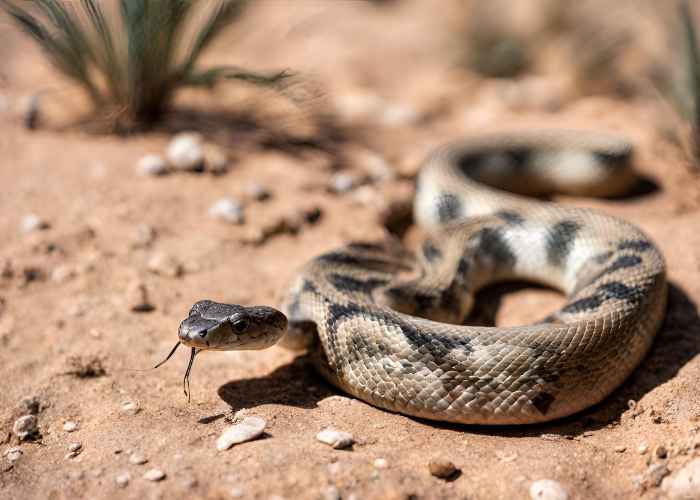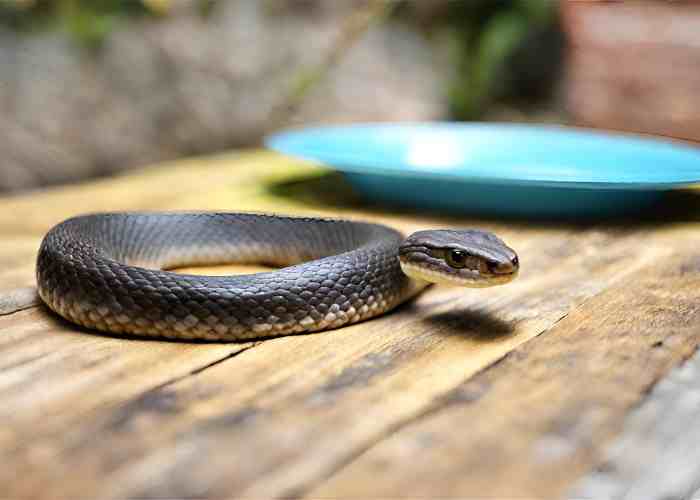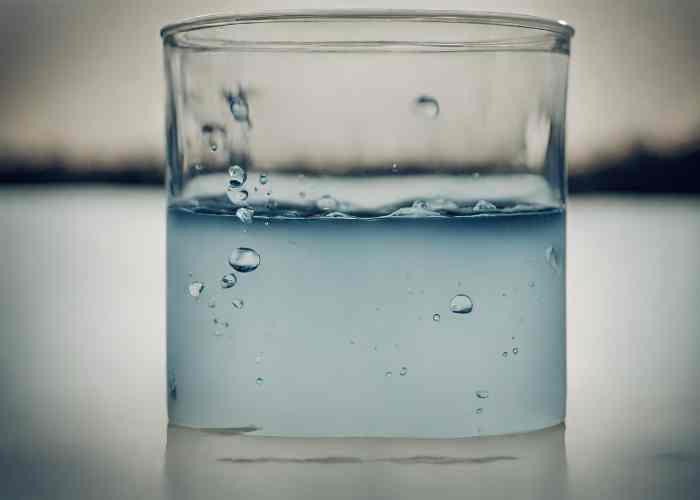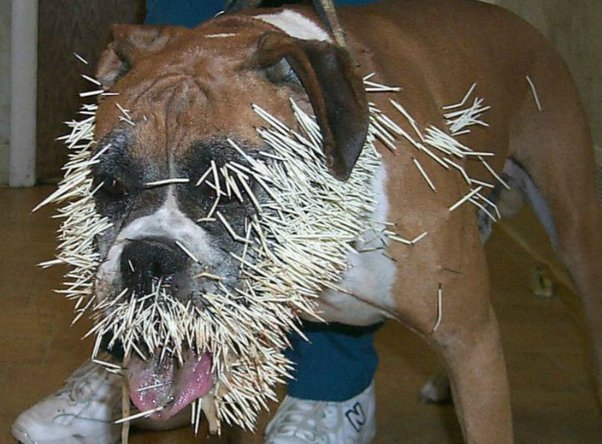Yes, snakes need to drink water to survive. While some snake species can obtain moisture from their food to meet some of their hydration needs, all snakes require additional water sources to stay healthy.
Snakes have very simple but effective digestive systems. They do not have salivary glands, so they cannot produce saliva to help break down and digest their food. Instead, snakes rely on external water sources to provide the moisture needed for digestion. Without adequate hydration, snakes cannot properly digest their meals.
In the wild, snakes obtain the water they need to thrive from various sources – streams, ponds, puddles, rainfall accumulation, and moisture on vegetation are just some examples.
But even snakes dwelling in tropical regions seek out and drink from standing water sources. So while the environment may provide adequate ambient moisture, direct water intake is still a necessity.
For pet snakes, providing a fresh clean bowl of water at all times is critically important.
Snakes are prone to dehydration, especially when shedding, so monitoring water intake and always having water available is a key part of responsible snake ownership.
Later sections will cover water and hydration needs for captive snakes in more detail.
How Often Do Snakes Drink Water?
Snakes drink water as often as they need it. Typically they will take a drink every few days, though some can go weeks without. How frequently an individual snake drinks mainly depends on factors like habitat conditions, diet, size, and age, but staying properly hydrated is essential to their survival.
For pet snakes, water intake patterns can vary but some general guidelines per species are:
- Ball pythons – Daily, especially when digesting food. More frequently during shed cycles.
- Corn snakes – 1-2 times a day. More often when shedding.
- Kingsnakes – Daily. Higher intake when digesting prey items.
- Boas – Daily, with increased intake after feedings.
Monitoring your pet snake’s drinking patterns will help determine if hydration needs are being met or if vet attention is required. Provide fresh clean water daily in a bowl large enough for soaking.
Methods of Snake Hydration in the Wild

Snakes employ a variety of methods to stay hydrated in wild habitats:
Drinking from water sources – Streams, ponds, puddles, and pooled rainwater offer opportunities for direct water intake. Some snakes, like anacondas, spend much of their time in swampy water.
Prey moisture – Snakes obtain moisture from food, which can meet some hydration needs based on the prey species’ body composition. Prey like frogs and fish have high fluid content.
Vegetation – Snakes will drink droplets of moisture that accumulate on plants, trees, and leaves in their environment.
Burrowing underground – By burrowing underground, species like gopher snakes can access cooler, moister soil. The humidity helps hydrate snakes through diffusion.
Physiological adaptations – Desert species especially have adapted to need less frequent water intake. Their specialized kidneys concentrate urine to retain fluids.
The Importance of Providing Water for Pet Snakes
Access to clean drinking water is critically important for a pet snake’s health and wellbeing. Here’s why providing hydration is essential:
Digestion – Snakes cannot properly digest meals without adequate water. Lack of moisture can lead to painful complications.
Shedding – Proper hydration allows old skin layers to separate properly. Low humidity and lack of soaking can disrupt natural shedding.
Waste excretion – Snakes excrete uric acid, so adequate hydration is vital for normal kidney function and preventing dangerous buildup.
Overall health – From appetite, to digestion, hydration, respiration, body temperature regulation and activity levels, water impacts all systemic functions.
Monitoring your snake’s drinking patterns, providing fresh water daily, and ensuring adequate enclosure hydration through mists/humidity helps keep your snake healthy and thriving in captivity. Never allow water bowls to stay dry for extended periods.
How to Provide Water for Your Pet Snake?

Follow these tips to meet your pet snake’s hydration needs:
Use a sturdy, appropriately sized bowl – Choose a heavy ceramic or stainless steel water bowl that can’t be tipped over easily. Size it appropriately for your snake to soak its entire body if desired.
Refresh water daily – Empty and refill the water bowl with fresh, clean water every day. Wash thoroughly before refilling.
Consider using filtered water – Tap water may contain compounds like chlorine that can irritate sensitive snake species. Filtered, bottled or rain water may be better options.
Mist the enclosure – Use a spray bottle daily to mist the enclosure, especially during sheds. This boosts hydration and humidity. Ensure proper ventilation to prevent mold.
Provide a moisture hide box – Offer a humidity retreat full of sphagnum moss or wet paper towels to aid hydration, especially during shedding periods.
Supplement soaks if needed – If your snake is showing signs of dehydration during a shed cycle, supplement by soaking them for 15-20 minutes in shallow room temperature water.
Monitor your snake’s drinking habits and watch for signs of dehydration like lethargy, wrinkled skin, irritated eyes or prolonged shedding issues. Proper water access is key for any snake!
Do Snakes Drink Milk?
No, snakes do not drink milk. As carnivores, they have no biological need for milk.
In mammals, milk provides essential hydration and nutrients to developing young. But snakes hatch from eggs able to hunt for food and drink water right away. They do not have a nursing stage requiring milk.
While milk likely won’t cause harm if a pet snake were to ingest a small amount, it provides no benefits. Milk may actually cause digestive upset or diarrhea.
Snakes have very specific nutritional requirements best met through whole prey items like mice, rats, chicks, or fish. They receive moisture from a separate clean water source. So milk should never be given to a pet snake.
Stick to the basics – feeder rodents, birds, or fish depending on species and size, along with fresh, clean drinking water. These meet all dietary and hydration needs. Milk and other mammal fluids serve no purpose and could cause issues.
Different Ways Snakes Obtain Water in Captivity

As discussed in earlier sections, providing a sturdy water bowl with fresh water changed daily is the most direct way pet snakes get hydration. But humidity and soaking options boost hydration further by allowing moisture absorption through the skin along with direct water intake.
Here are some other ways pet snakes access moisture in captivity:
- Misting – A daily misting provides droplets for drinking off cage furnishings and elevates humidity.
- Moisture box – Boxes with wet substrate like moist moss give snakes a humid hide. This aids hydration and shedding.
- Soaking – During shed cycles, soaking your snake in shallow water assists the shedding process and provides hydration through the skin.
- Water features – For species that enjoy it, providing small water features allows soaking opportunities. Ensure safety and easy exit points.
Take cues from natural snake habitats and create opportunities for soaking, surface moisture, rainfall simulation through misting, and humidity balance using screens and appropriate substrates. This helps your snake stay properly hydrated much like it would in the wild.
Encouraging a Snake to Drink if It’s Not Drinking Enough
If you notice your pet snake does not seem to be drinking enough water, here are some tips to encourage hydration:
- Refresh the water daily or even twice daily to stimulate interest through the movement and smell of clean water.
- Slowly increase the enclosure’s humidity and provide soaked moss hides to boost ambient moisture. This may spark drinking behavior.
- Try different water containers – a smaller bowl, a drip system or fountain, or a heavier, flatter vessel may entice the snake. Offer multiple options.
- Spend time each day misting sections of the enclosure to provide droplets a hesitant snake may lick up. Focus on coils or climbing branches.
- If humidity and misting doesn’t work, try a hydration soak. Gently place the snake in a few inches of lukewarm dechlorinated water for 15-20 minutes a day. Monitor for safety.
If you’ve tried all these tips persistently for a few weeks and drinking is still minimal, consult your exotic vet for an exam, lab work, and possible treatment. Lethargy, wrinkled skin, irritability, and bad sheds accompanying lack of drinking all warrant medical attention. Stay vigilant regarding your snake’s hydration.
Signs of Dehydration in Snakes and How to Prevent It
Catching dehydration early and addressing it quickly in pet snakes is very important for their health. Monitor for these signs:
Lethargy – A dehydrated snake will be less active and alert. It may spend more time curled in hides vs. out exploring.
Skin tenting/wrinkling – Gently pinch and lift a section of skin along the back or belly and see if it stays tented. Poor elasticity can indicate dehydration.
Irritability – Snakes use heat-sensing pits when striking prey. If these facial pits appear sunken rather than smooth, dehydration may be causing irritation.
Prolonged shedding – Lack of humidity makes it hard for snakes to shed properly in one piece. The old skin sticks in patches rather than sliding off.
Urates changes – The uric acid portion of snake waste may turn a chalky color vs. white, smell strongly, or become inspirated with solids rather than liquid.
To prevent dehydration, provide a large enough water bowl for full body soaking, refresh water daily, mist the enclosure to boost humidity, and offer moist hide boxes as needed during sheds. Watch for reduced drinking over several days and address promptly with soakings. Consulting an exotic vet is key if symptoms don’t quickly resolve or worsen.
Importance of Snake Hydration
To wrap up – hydration is critically important for overall snake health and wellness. Access to clean drinking water along with humidity that allows further moisture absorption through their scales helps snakes:
- Properly digest meals
- Shed old skin cleanly
- Pass uric waste normally
- Maintain proper activity levels
- Keep skin, eyes, cloacal vent, and scenting pits healthy
- Aid muscle contraction strength
- Promote healing from injury or illness
Without adequate moisture internally and externally, snakes will struggle with these systemic functions that require fluid balance and lubrication. Be vigilant of your snake’s hydration habits. Ensure multiple clean water sources, humidity through misting, and retreats like moist hide boxes. Never allow dehydration through negligence. Meet your pet snake’s hydration needs and you will enjoy a healthy snake for years to come!
FAQs about snakes and drinking water:
How often do snakes drink water?
How often a snake drinks water varies by species, environment, time of year, and other factors. Pet snakes tend to drink daily, with increased intake after eating or when shedding. Wild snakes drink when they have access to water sources. Some species can go weeks between drinks.
How do you give a snake water?
The best way to give a pet snake water is in a sturdy bowl that can’t be tipped over. Refresh the water daily. Provide enough water for the snake to soak in if desired. Position the bowl so it’s easy for the snake to access.
Do snakes feel thirsty?
Snakes do have a sense of thirst and intentionally seek out water to meet hydration needs. When dehydrated, snakes become lethargic and display symptoms like wrinkled skin and sunken eyes. Providing adequate hydration prevents thirst distress.
Does snake drink water from mouth?
Yes, snakes do drink by sucking water into their mouth, then lifting their head to let it run down into their body. They don’t use lips for suction like mammals, but can still draw water into the mouth deliberately before swallowing.
Do rattlesnakes / bull snakes / brown snakes / sea snakes / black snakes / worm snakes drink water?
Yes, all snake species drink water in addition to getting moisture from prey. Rattlesnakes, bull snakes, brown snakes, sea snakes, black snakes, worm snakes, and all other snake species will actively seek out and drink water as needed for hydration.
Do all snakes drink water?
Yes, all snake species drink water. While some obtain moisture from food also, all snakes require and will seek out additional external water sources like streams, puddles or spilled water bowls to meet their periodic hydration needs.

🐾 I’m Marquis, an animal enthusiast 🦁🐯 with a passion for both wild and home animal care. In the wild, I’ve studied majestic species like 🦍🐅, collaborating with conservationists. At home, I’m all about fostering loving environments for pets 🐶🐱🐦, with hands-on experience and shelter volunteering.




Leave a Reply